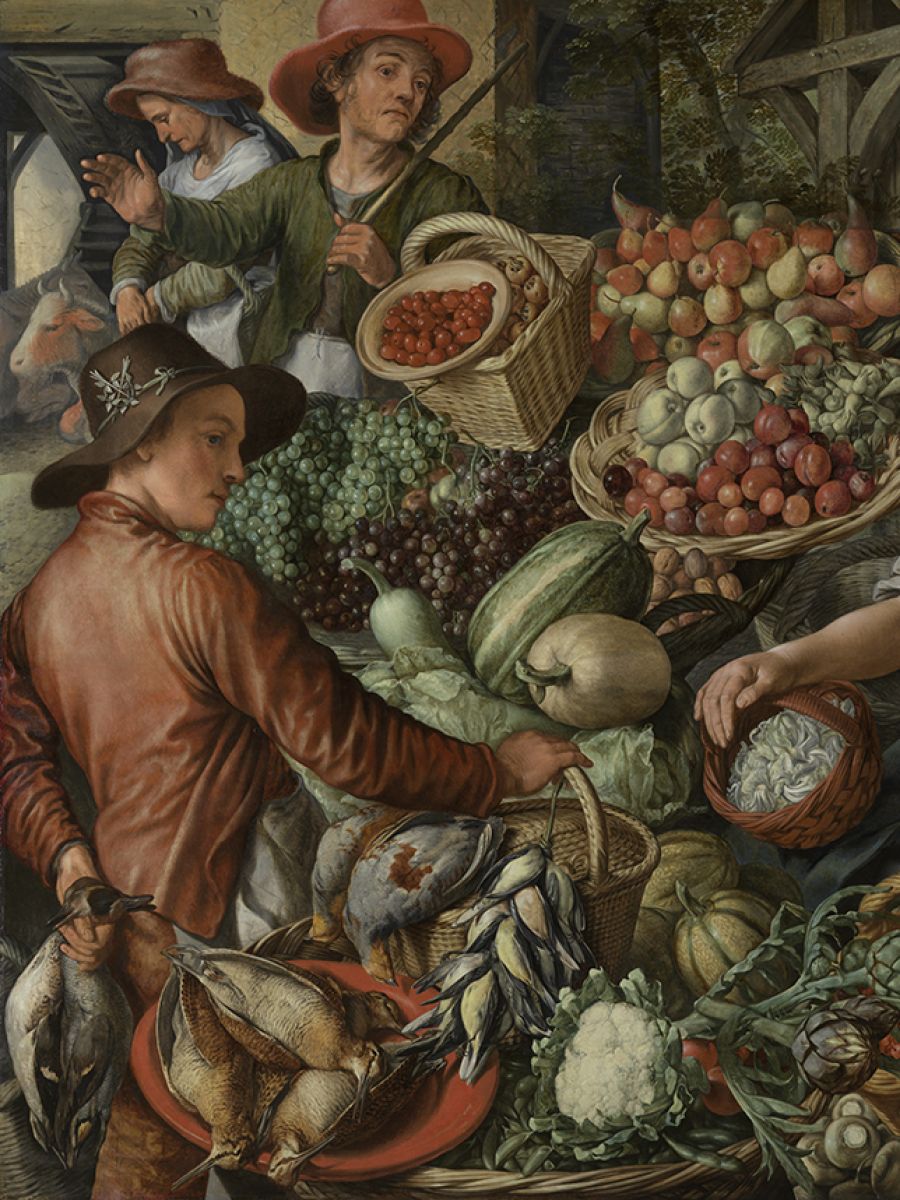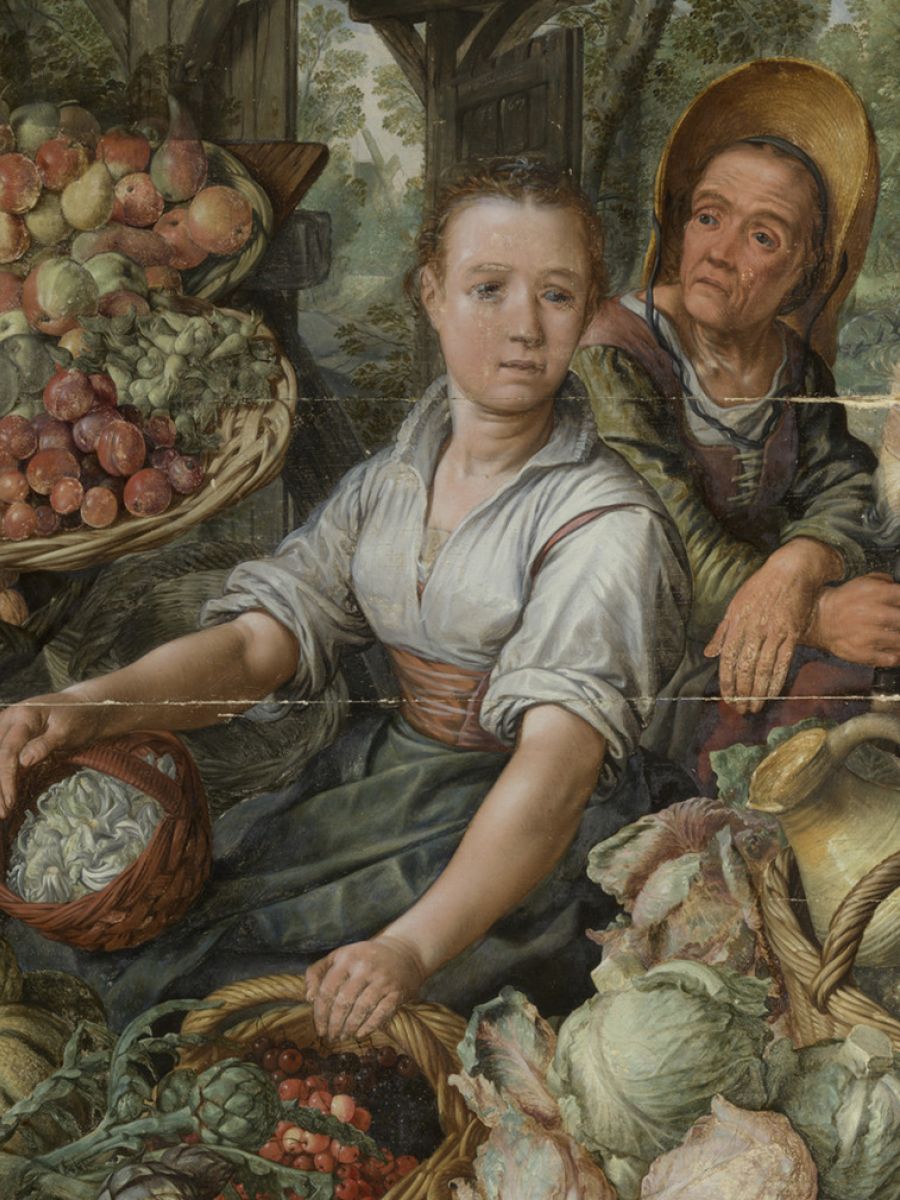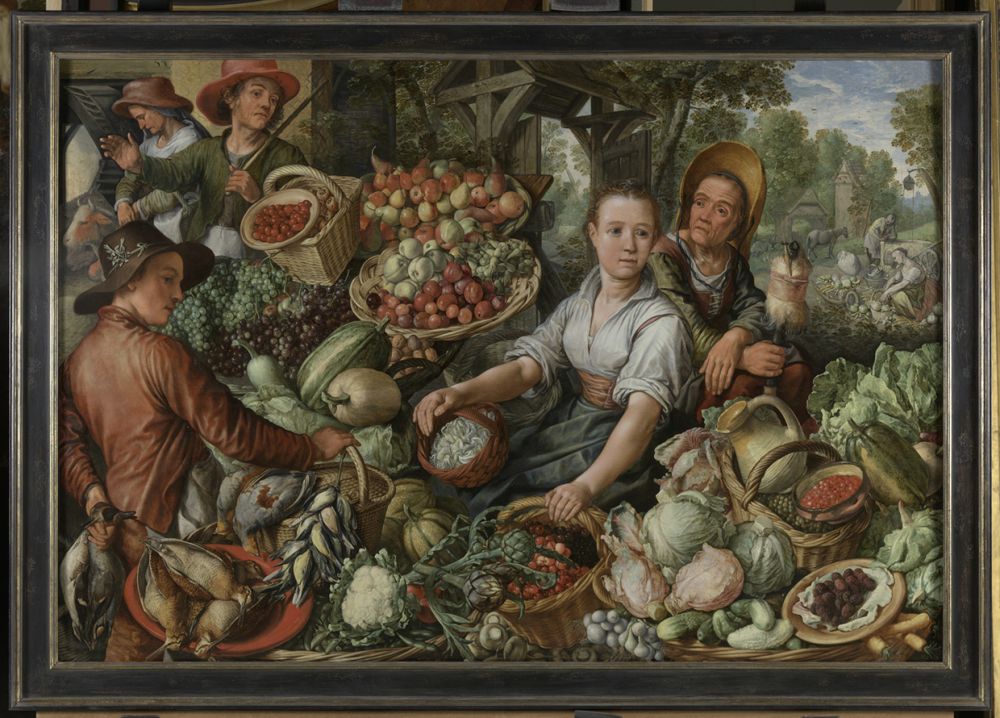Gleaming vegetables and fruit

Joachim Beuckelaer painted The Vegetable Market – the latest in his famous line of similar scenes in 1567. Inspired by his teacher Pieter Aertsen, who first developed the genre, Beuckelaer became a master of the market view, peopled by figures selling an abundance of foodstuffs laid out in the foreground like a still life. The Vegetable Market recently underwent full conservation.

Vegetable Market - Joachim Beuckelaer, KMSKA (after conservation)
The painting, which entered the KMSKA collection in 1950, was hidden beneath a thick layer of severely darkened varnish. Beuckelaer’s bright colours could barely be seen any more. Preliminary examination revealed lots of old retouches and overpaints and there was also a problem with the paint’s adhesion to the support. Conservation was needed if the work was to be secured for the future.
Drawing first, then painting
We began by removing the varnish from the paint layer, which gave the composition back its sense of depth. The different colour tones Beuckelaer used were also revealed once more and the contrast heightened between the saturated colours of the merchandise in the foreground and the pastel-coloured scene in the background. The next task was to consolidate the lifted paint. Analysis of the paint surface during conservation gave us a clearer understanding of the painter’s technique, as did new technical documentation in the shape of infrared and ultraviolet images.
How did Beuckelaer go about creating this work? The oak panel comprises six horizontal boards coated with a chalk ground and a second white preparatory layer. The artist made an extensive underdrawing on the white ground. He began by laying down a squared grid to help him transfer a small preliminary study to the larger panel. Beuckelaer drew in two colours, black and red, which show through the paint layer in numerous places.

Underdrawing - The drawing shows through the paint layer in numerous places.

Infrared - Viewed in infrared, the black part of the underdrawing can be made out even more clearly.
Viewed in infrared, the black part of the underdrawing can be made out even more clearly. The artist then worked up the painting using a simple structure and thin layers of paint. He paid close attention to realistically rendering the various types of vegetables and fruit. They are presented individually and are readily identifiable, even though they were harvested in different seasons and would not actually have been available at the same time. This tells us that Beuckelaer must have planned his composition carefully, probably working from a number of preliminary studies.
Legible face
It became clear during treatment that parts of the main figures’ clothing had been overpainted some considerable time ago. Discolouration of the paint has been detected in other paintings by Beuckelaer, robbing elements such as the folds in garments of their three-dimensionality. Someone probably decided to ‘restore’ the work at an early stage by overpainting certain zones. Tests showed that these early overpaints could not be removed without harming the layer beneath and so we decided to leave them where they were.
Beuckelaer drew in two colours, black and red, which show through the paint layer in numerous places.
Once the varnish had been removed, extensive retouching began, in which we repaired abraded areas and filled in losses in the paint surface. By closing broken forms, we restored a sense of calm and detail to the scene. Certain zones required some subtle reconstruction, including the face of the prominent young woman, where it was clear after the early retouches were removed that surface abrasion had uncovered the artist’s preliminary design. This created a confusing impression around her eyes, which are an important part of the composition. We applied dots where appropriate so that her face became legible once more.

Retouches - It was clear after the early retouches were removed that surface abrasion had uncovered the artist’s preliminary design.
Metamorphosis
Before it was treated, The Vegetable Market was displayed in a non-original gilt frame, which was in poor condition and did not match the painting aesthetically. Frame-maker Bart Welten made a new one – dark with gilt edges – that is more in keeping with the period in which the painting was created. The new frame contributes significantly to the total metamorphosis of the work.

New frame - The restored painting with its new frame
When the KMSKA reopens, we will be able to present the freshly conserved Vegetable Market for the first time. Together with the Allegory of Imprudence, which has also received conservation treatment, visitors will once again be able to admire Beuckelaer’s fascinating painting technique.
This conservation project was made possible with the support of players of the National Lottery. It was overseen by the Flemish Community’s Masterpiece Committee.
This article first appeared in the winter issue of our museum magazine ZAAL Z.




